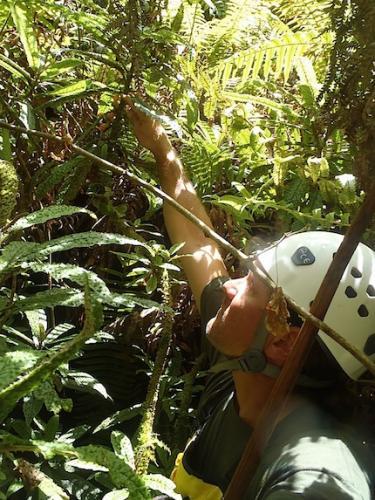As lush and overgrown as the landscape at Hawai'i Volcanoes National Park might appear, there are some plants that are at risk of going extinct. To prevent that from happening, park rangers have been working to collect seeds of four extremely rare plants.
Rangers recently rappelled nearly 200 feet into a remote pit crater to "rescue" seeds and cuttings from the four plants in the national park. The park will use the seeds and cuttings to help reestablish these species.
During the mission, seeds and cuttings from hāhā (Cyanea stictophylla), a federally endangered shrub found only on Hawai'i Island, were carefully collected. This stunning plant is extremely rare; in 1996, only 20 plants were estimated to survive in the wild.
Seeds and cuttings from other rare species collected included a species related to hāhā, Cyanea pilosa; an odorless Hawaiian mint (Phyllostegia sp.); and a native shrub in the African violet family, ha'iwale (Cyrtandra lysiosepala).
Although a 4,000-foot elevation and the steep, sheer walls of the forested pit crater aid in protecting the hāhā's ecology, those conditions make it challenging to retrieve cuttings and seeds. Two specialized teams from the national park, the Natural Resources Management rappel team and the Search and Rescue team, descended into the crater, retrieved the seeds and cuttings, and returned safely to the surface – a 12-hour mission.
Joining rangers were members of Hawai'i County Fire Department and Pōhakuloa Training Area's fire management team. This enabled the project ample contingency resources in the event of an incident, and fosters interagency cooperation that will be seeds in themselves for future mutual assistance.


 Support Essential Coverage of Essential Places
Support Essential Coverage of Essential Places







Add comment